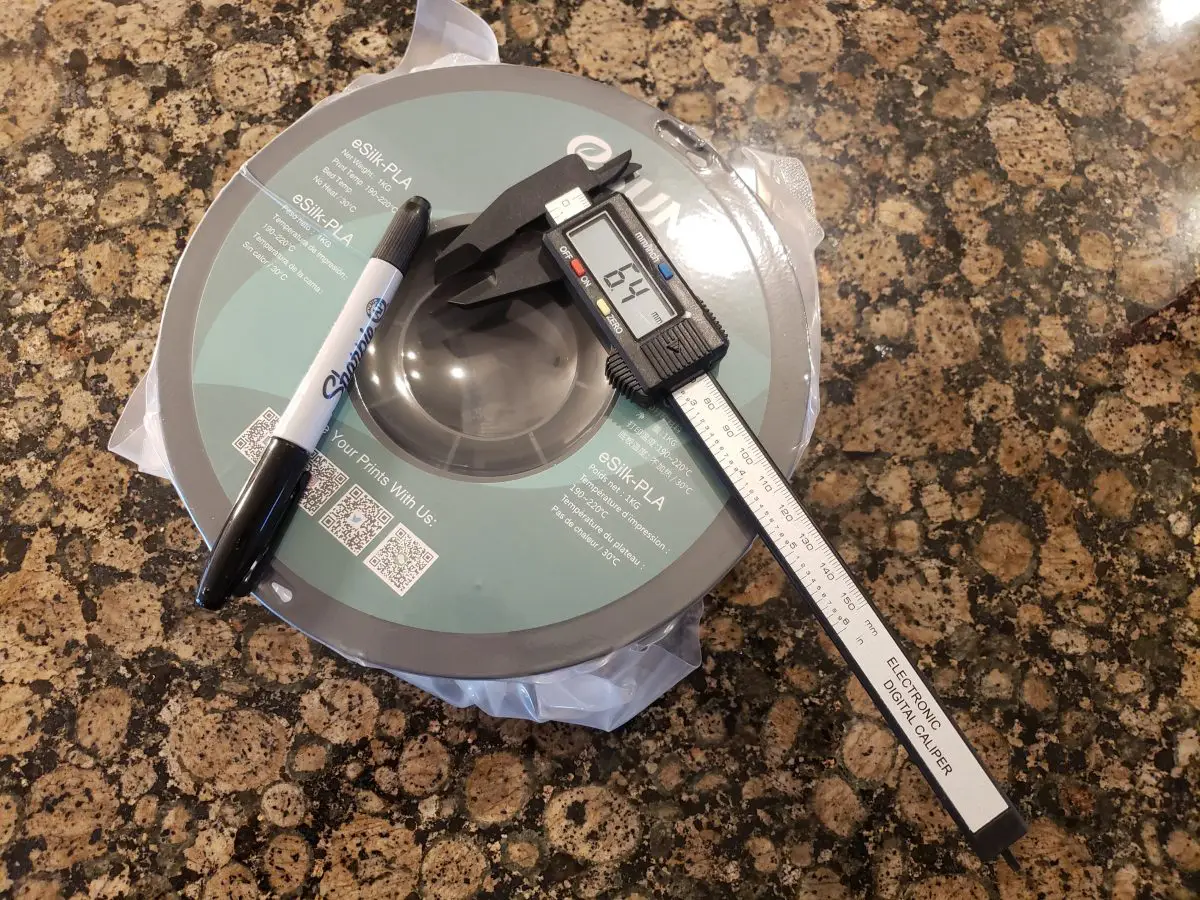
Both Petg and PLA filaments are unique and have the benefits of using one over the other. Depending on the end result you’re looking for, one will be more beneficial to use, and thus, why you’re here in the first place!
PLA plastic is a biodegradable material that is composed of sugarcane and corn starch, while PETG plastic is a recyclable material made from polyethylene terephthalate. The most common diameters for PLA and PETG filament happens to be 1.75-mm in diameter and 2.85-mm in diameter.
But what are the main advantages and disadvantages when it comes to PETG vs PLA filament? Let’s jump into it!
The difference between PLA and PETG starts with their source materials. PLA is made from plant-based sugars while PETG comes from the natural gas component ethylene. The manufacturing process for both plastics starts with raw materials being heated to a high temperature before they are transformed into monomers. The monomers then form long chains called polymers that are compounded together to create either PLA or PETG plastic.
If you’re looking to print PETG or PLA, this article is for you!
What’s the Difference in PLA vs PETG
Let’s take a look at what makes each PETG and PLA unique and the benefits of using one over the other for your particular 3D print design.
Outdoor Use
If you are wanting to 3D print a model for outside use, I would suggest using PETG filament. It can withstand weathering and holds up far better to constant sunlight than PLA would. If you still would like to use PLA filament for outside, I would suggest using a protective paint coating first to help seal it.
Overall Strength
If choosing PETG vs PLA for strength alone, the clear winner would go to PETG filament as it’s able to withstand way more accidents than PLA filament.
Temperature
PETG requires a much higher temperature than PLA. For example, Hatchbox PETG instructions recommend a nozzle/extrusion temperature of 230°C – 260°C (446°F – 500°F). PLA filament typically is 190-205 °C or (374°F – 401°F).
Other Material Look-alikes
We have to give this to PLA filament over PETG as there are several PLA’s that let you print in wood, bamboo, and other wood filaments as well as metal filled filaments that are typically only 5% of the material (bronze for example). You can find all-metal filaments but the prices are insane and require a specific printer setup.
Recyclable/Biodegradable
Both PLA and PETG are recyclable (which is great news!) however, PETG just doesn’t break down quite as fast or easily as PLA filament. Therefore, PLA is the clear winner here as it will return to its natural materials over a long period of time if left outside.
Heat Resistance
Temperature is a big factor when choosing between PLA and PETG. PLA can withstand MINOR heat but is not ideal for hot locations such as outside that will be exposed to the sun day in and day out. PETG is much more well equipped for UV resistance. PLA will start to warp under direct sunlight exposure which makes it obviously not great for heat resistance.
Printing Differences Between PLA vs PETG
One thing you must take into consideration is the printing differences between the PETG filaments and PLA. They of course print at different temperatures and act independently of one another. Therefore, they will have specific nuances you will want to be aware of before you start using one or the other.
Printing Temperatures
As stated above, Hatchbox PETG recommends a nozzle/extrusion temperature of 230°C – 260°C (446°F – 500°F) and for reference, PLA filament prints best typically around 190-205 °C (195°C works best for me with miniatures) or (374°F – 401°F).
Bed Adhesion
PLA tends to be the winner on this one. It warps less and tends to stick a bit better. I’m not a huge fan of advocating for hair spray, or glue, or any other sticking agent. Some have great luck with this, I feel it’s unnecessary, if you have your bed leveled correctly there should be no problems and for me, this just caused a sticky mess to clean up later.
When using PLA I use a bed temperature of 60 °C. I recommend a heated bed of 70°C – 80°C. However, We advise not to heat your bed above the glass transition temperature of PETG (80°C ).
PLA and PETG Stringing
PLA is the clear winner here as PETG is known to have stringing and “oozing” issues. Once you get the temperature dialed in, this shouldn’t be as big of an issue. Just be careful not to lower it too much as the material will have a harder time coming out of the nozzle, and thus, creating a dreadful clog! And if you own a 3D printer, you know how fun those can be (NOT!)
Changing Filament
As with both of these, the normal filament changing process stays the same. Preheat to the desired melting temperature of the current material and change it out accordingly. We have a specific article on how to change the Ende 3 filament if you need it!
Filament Diameter

This tends to be the same for both as the most common dimensions for both materials is 1.75-mm diameter and 2.85-mm diameter.
Supports
Depending on your print, both will require supports, but there isn’t much more to be said about that. Sometimes the distance setting between the 3D design and support needs to be higher for PETG, but really not a huge issue if you don’t tweak this setting.
Frequently Asked Questions
Is PLA more rigid than PETG?
material or in other words more elastic than PLA material which makes it more malleable and bendable. In addition, it is less fragile than PLA. Compared to ABS it is also less rigid
Is PETG better than PLA?
The simple answer? No, it depends on the print job. If you are looking for a material with high durability, then it would be better to go with PETG over PLA. PETG is more durable and not as rigid (more bendable) and unlike PLA, PETG is more resistant to weathering such as water/direct UV sunlight.
What is PETG good for?
PETG is the perfect filament to combine strength and durability. It has great weathering resistance to water, and direct sunlight (UV rays). It also has chemical resistance to acidic and alkalic properties. In addition, it makes great parts for things such as robots, model replicas, etc.
Can I use PETG in a PLA printer?
The short answer is yes, however you may need a different hot end as the melting point is different from that of PLA. I would recommend a micro-swiss hot end or something similar. A higher bed temp is needed as well (70°C – 80°C). In addition, an enclosure would be beneficial for the best printing results.
Recommended Reading
How to Clean 3d Printer Bed (Full Guide)
If you continue on you’ll see I have compiled a list on how to clean 3D printer bed and the most useful tactics to accomplish this task.
The Best Methods for PLA Smoothing
There are four main methods for smoothing 3D prints that we most often use, and these are also the ones that we recommend to our readers.
3d Printing With Hatchbox Wood Filament – Should You Buy It?
Hatchbox wood filament is an excellent 3D printing material that you should try out at some stage in your 3D printing career. Check out what it has to offer
Cheap 3D Filament – Good or Bad?
Wondering if there is PLA filaments you can buy at a very cheap cost? There are plenty Cheap 3D Filaments to choose from. Check out our list
Direct Vs Bowden Extruder. Which Is Better?
Extruders are one of the most important elements of a 3D printer. There are two types of extruders that we’ll be looking at, Direct and Bowden.
What’s The Difference Between PLA Vs PLA+ (PLA Plus)?
let's look in more detail at the PLA filament type in this article and how it compares up to PLA+, the supposedly new and enhanced filament.
